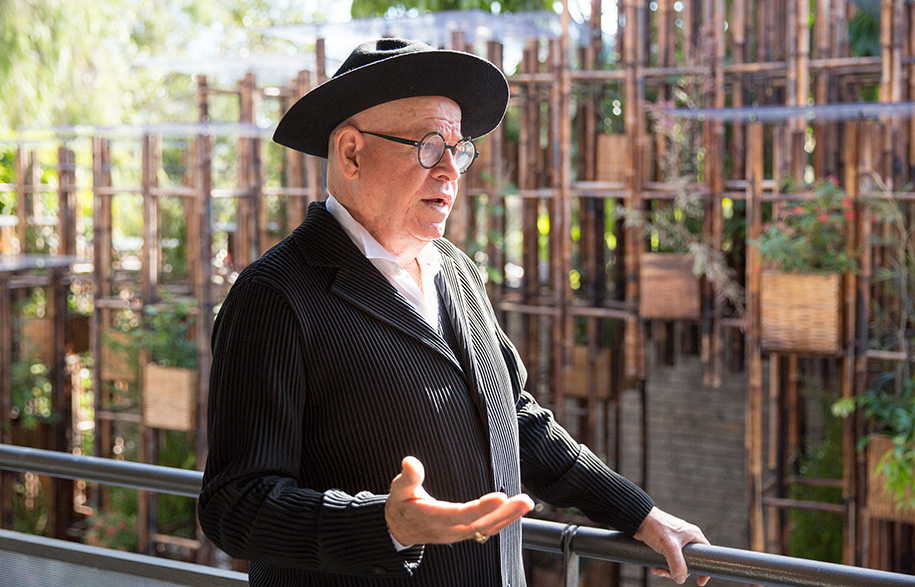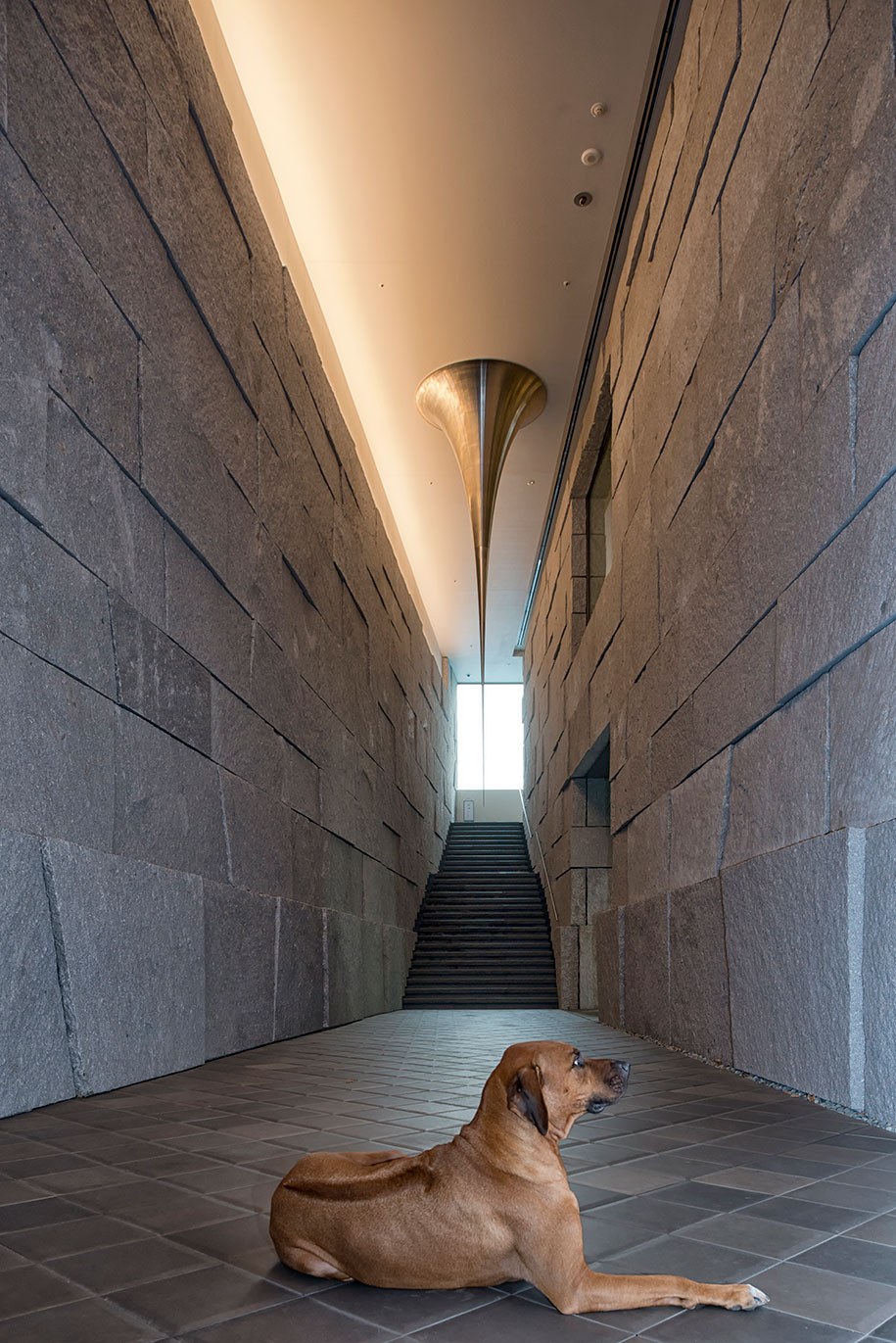Every day Joni Waka travels everywhere, with his faithful dog Bogie, a glorious looking Rhodesian Ridgeback. Joni may embody the idea of living in design, but his identity is hard to pin down. He is one of the only American Jews with a Japanese passport. He has been living in Asia for over 30 years. He speaks 12 languages and can curse effectively in 8.
So the myth goes, Joni was sent from Manchuria to India to go to school with just a dog and man servant. Around the age of 20, he landed back in Japan and fell in love with the culture. Today he calls art his ‘religion’.
“The wilder the better. That’s my motto. I love to push myself to the edge to find out who I am or what I am about,” he says.
To Joni good design is simple and original. Something that shows historical or ethnic reference to the designer’s culture and a splash of satire.
“I live design as a passion, maybe as an addiction,” he says.
“I do it by continually updating, and surrounding myself with the next wave of cutting-edge design; Everything, from the clothes, accessories and eyeglasses I wear, to the car I drive, to the house, garden and neighbourhood I live in.
“I access design through the shops and restaurants I frequent, the dishes I eat from, the chairs I sit on to the leash and collar my dog wears. I like to leave no stone unturned.”
His favourite architects are a global bunch including; Shigeru Ban, Sanaa, Ole Scheeren, Tonkin Zulaikha Greer and Klein & Dytham. His favourite interior Designer is Shinichiro Ogata of Simplicity.
Joni’s own home is a bit different.
“I just sold my last house, it was called The Dog House and it was designed by Joseph Kosuth. It was built by traditional Japanese temple carpenters and covered with 21 neon word art works, all famous quotes about dogs, 10 in English and 11 in Japanese all made on Venetian glass framed and mounted on black stainless steel. My next house for which I am currently searching a location, is designed by the artist Ai Weiwei.”
Joni’s enmeshment in the global architecture design scene is no accident. He says he’s achieved this,“By living it.”
Joni loves Australia, but fears Sydney has too many rules. He finds the building codes too strict. “It hinders creativity,” he says. “In Tokyo you can build anything anywhere,” he says.
Despite the young scene in Sydney, Joni loves Australia’s optimism.
“Australians have taken great inspiration from Japan and further enhanced Australian design from Milton Moon to Lucas Chirnside,” he says.
When it comes to presenting himself in public, Joni is very specific. He is never seen without this ultimate accessory, his dog Bogie.
“The dog is my alter ego. I like to show Tokyo through the eyes of my dog as a satire of the famous 100 yr old Japanese novel by Soseki Natsume: Wagahai Neko (I Am A Cat),” he says.
Art Bank Tokyo
artbanktokyo.com
The Art Foundation
theartfoundation.com
Words by Belinda Aucott.
Photography by Aimee Crouch courtesy of BresicWhitney and PM Cook.



